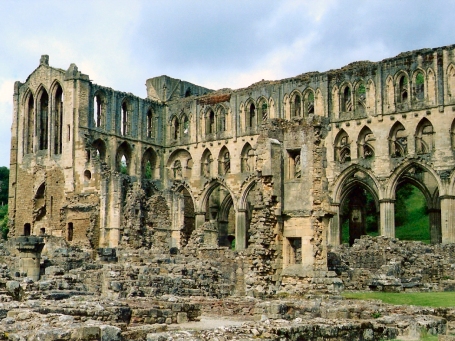
Dryburgh Abbey was founded in 1150 by Hugh de Moreville, one of the assassins of Thomas Becket, Archbishop of Canterbury. De Moreville befriended David I of Scotland, who had spent his youth at the court of his brother-in-law Henry I of England, and was granted extensive estates in the Borders. By 1150 when he founded the abbey, de Moreville was the constable of Scotland. He invited the Premonstatensians from Alnwick in Northumberland to set up the house, their first in Scotland. The construction of the abbey took over one hundred years.
The peace of Dryburgh was shattered during the war of independence. In 1322, Edward II's army, retreating south after another unsuccessful invasion heard the abbey's bells ringing in the distance, turned aside and set fire to the place. This was the first of several attacks the canons endured throughout the later middle ages. Robert the Bruce gave financial help for the rebuilding of the abbey.
Idyllic monastic life flourished here again until the abbey was visited in 1544 by the Earl of Hertford during the 'Rough Wooing' which preceded the Reformation. The eight remaining canons embraced the reformed religion and were allowed to remain but no new members were permitted. By 1584 there were only two remaining. A document dated 1600 stated that "all the convent thairof are now deceissit" – all the convent thereof are now deceased.
In 1786 the abbey was purchased by David Erskine, eleventh earl of Buchan, who undertook preservation of the abbey ruins. Sir Walter Scott is entombed here as well as Field Marshal Earl Haig of nearby Bemersyde, a 12th century estate near the abbey.
View more photographs of Dryburgh Abbey at Travels in the UK, a travelogue by the Webmaster: Dryburgh Abbey Photo Gallery.

A monastery is a building or complex of buildings comprising the domestic quarters and workplaces of monastics, monks or nuns ...Read more at Wikipedia.

Cathedrals, as well as many abbey churches and basilicas, have certain complex structural forms that are found less often in parish churches. Read more at Wikipedia.